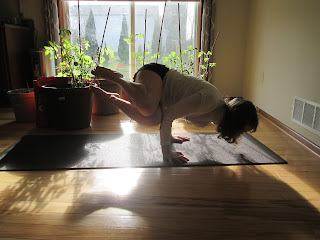Yoga as Antihypertensive Lifestyle Therapy
The 2017 American College of Cardiology and
the American Heart Association (AHA) Guidelines redefined hypertension to a
lower blood pressure threshold of 130 mm HG for systolic blood pressure (SBP)
and 80 mm Hg for diastolic blood pressure (DBP).
Considering these guidelines, 46 %
of US adults now present with hypertension. The 2017 American College of
Cardiology /AHA Guidelines highlight the importance of regular exercise for the
management of hypertension along with the DASH diet.
A meta-analysis published by Mayo
Clinic Proceedings in March 2019 found that when yoga is practiced with
breathing exercises ( pranayama) and meditation-relaxation techniques it is a
viable antihypertensive lifestyle therapy that helps to reduce blood pressure
(1).
The study showed that the practice
of yoga three times a week reduced systolic blood pressure by 11 mm Hg and 6 mm
Hg in the case of diastolic pressure. These reductions of blood pressure equal
or exceed the decrease reported by aerobic exercise. Therefore, we need more
randomized controlled studies to investigate this benefit and to recommend yoga
as part of the management of blood pressure.
The trials included in the
meta-analysis published by the Mayo Clinic were considered eligible if the yoga
classes integrated breathing, meditation-relaxation techniques and physical
postures. Blood pressure had to be reported before and after the intervention
for the yoga and control groups. The meta-analysis included 3517 adult
participants; the studies had to include a non-exercise/non-diet control group.
All the studies considered were published in peer-reviewed English language
journals.
The purpose of the meta-analysis was
to estimate the antihypertensive effects of yoga, so they emphasized the need
to have a control group of participants that did not exercise to evaluate the
efficacy of yoga as an intervention to reduce blood pressure. Forty-nine
controlled yoga trials satisfied the criteria. The results indicated that yoga
was an effective intervention.
Keeping blood pressure under control
is of vital importance to protect the health of the brain, heart, eyes and
kidneys.
How can yoga help to keep blood pressure under
control? First of all, the practice needs to be safe. Yoga has to include
breathing exercises and meditation-relaxation to be effective. Even without the
physical postures, meditation itself has been shown to help to lower blood
pressure and calm anxiety in addition to providing other health benefits (2 and
3).
The practice of yoga is holistic, so
there are multiple physiological responses that play a role in the way this
discipline guides the body to become more resilient to stress. Research has
shown that the practice of yoga is associated with an increase of BDNF
(brain-derived neurotrophic factor), beta-endorphins and a reduction of
cortisol levels (4). Yoga as a mind-body practice may have an effect on the
hypothalamic-pituitary axis, the regulation of the expression of genes and the
inflammatory response (5).
More research is needed to
understand the ways yoga can be integrated into conventional medicine to
optimize the management of medical conditions and to improve outcomes.
References:
1) https://pubmed.ncbi.nlm.nih.gov/30792067/
2) https://www.ahajournals.org/doi/10.1161/JAHA.117.002218
3) https://pubmed.ncbi.nlm.nih.gov/30425326/
4) https://www.sciencedaily.com/releases/2017/08/170822104855.htm
5) https://www.frontiersin.org/articles/10.3389/fpsyg.2020.02259/full




Comments
Post a Comment
Thank you for commenting.